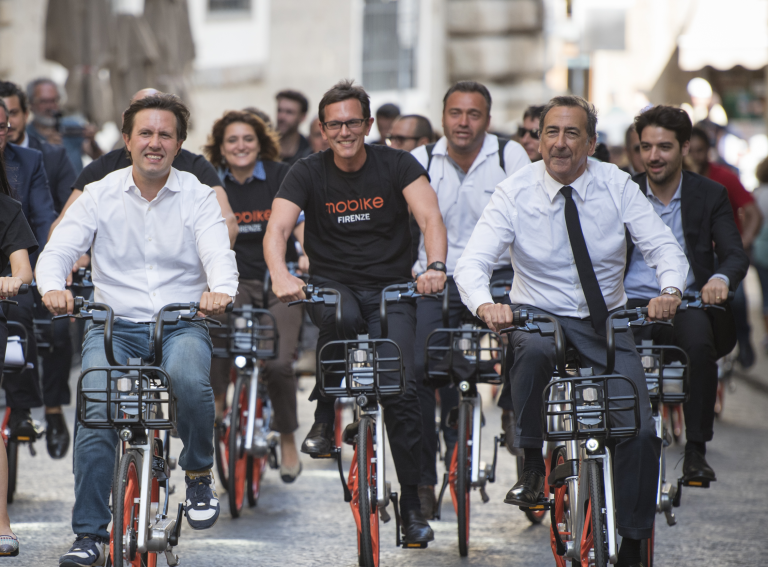The first bike share tender schemes around the world originated in France in the late 20th century, and the model has remained relevant to this day. Starting off in Rennes, it spread across Europe to cities such as Paris, Milan, Oslo, Barcelona and then London.
The sector has been dramatically disrupted in recent years though, kicking off when firms like Ofo and Mobike began introducing free floating bikes and advocating for private licences in 2016-17. E-scooters caused further disruption a few years later, but a period of consolidation is now starting to emerge.
“Despite the increased diversity of micromobility schemes, bike share tenders have never gone away and they are now coming back into fashion,” Kristian Brink, who also serves as CEO of micromobility software platform Urban Sharing, tells Zag Daily.
“This is particularly evident in Southern Europe, where a lot of cities have used EU-funded mobility budgets to set up publicly-run bike share tenders since the end of the Covid-19 pandemic.”
Benefits of public tenders
While little consensus exists on the best way to operate micromobility schemes across the sector, Brink believes that there are clear benefits associated with city-run tenders.
“Tenders operated by the public sector provide a fixed source of revenue for a set number of years, which enables operators to guarantee a certain level of volume,” he explains.
“Without public funding firms are reliant on outside investment and trip numbers, which can create negative externalities.”
As Brink has vocalised before, when operators are too focused on trip number based metrics they tend to favour higher income areas where people are more likely to be able to afford to ride.
“Public funding means that under served lower income areas also gain access to sustainable mobility,” he continues.
“Cities that provide limited funding end up with transport dead spots, which results in people relying on private cars and becoming isolated.”
Beyond the societal impacts, city-run tenders help stabilise the micromobility industry and create a solid foundation for sustainable, long-term growth.
“These waves of disruptions have positive impacts, but they also create volatility,” Brink argues. “Meanwhile, guaranteed public funding provides operators with a vote of confidence and a grounding that allows innovation to occur over a five to 10 year period.”
In fact, Urban Sharing was itself founded because of a 2016 tender application in Oslo.
“The operator wanted to create a company to build the technology for the bike share team and that was Urban Sharing,” Brink recalls.
Today, it applies for tenders as a SaaS provider, either to manage the entire bike share platform or just an aspect of it.
“Without tenders we wouldn’t have separated hardware and software specialists, but instead operators would still manage every aspect from design to operations and fleet management. This loss of specialism would be detrimental.”
Mapping bike share
According to the Meddin Bike Sharing World Map, there are currently more than 9,000,000 bikes available for hire and more than 2,000 active schemes around the world.
The map was created in 2007 by Paul DeMaio and was taken over by Russell Meddin in 2009, who was a mentor to Brink when he entered the sector in 2015. Sadly, Meddin passed away in 2020, but his advocacy for bike share continues to have an impact to this day.
“He would wake up every morning and translate articles from all around the world in order to update the map,” Brink remembers.
“It has been updated since 2014 and is such a valuable tool.”
Following his death, the North American Bike Share Association created a scholarship for bike share researchers called the Russell Meddin Foundation. Meanwhile, PBSC committed to sponsoring the map so that it could continue to be updated.
“The map is now managed by Paul again who helps produce a report every year detailing the changes that have taken place,” Brink says.
“It is still one of the best sources in the world for bike share news.”
A dramatic evolution
Looking back on more than 25 years of bike share, Brink emphasises just how much things have changed. In the early days, for example, out-of-home advertising models were common, with operators given billboard space by the cities to support profitability.
This led to firms such as JCDecaux and Clear Channel becoming some of the early drivers of micromobility.
“These companies’ core business is outdoor advertising, not bike share,” Brink explains.
“However, they have the financial muscle to deploy large fleets.”
A shift began to occur though in the mid-2010s and schemes became professionalised as local authorities and populations began to view bike share and micromobility as an extension of public transport.
“Bike share is now an ingrained part of the public transport portfolio of cities,” says Brink.
“Increasingly the tickets are subsidised to improve affordability, while regional tenders are becoming more common too. One model that has become popular is placing bikes outside train stations to make rural areas more accessible.”
While some players still favour a more disruptive, free-market model, Brink believes that the tender revival is positive for micromobility in the long-run.
“The way tenders are being assimilated into public transport is perhaps not the sexiest model that many startups would favour,” he argues.
“But it is actually the most pragmatic and convenient right now. Five years down the road, it will have created an established industry that can foster new startup waves and new ways of looking at mobility that will be here to stay.”





